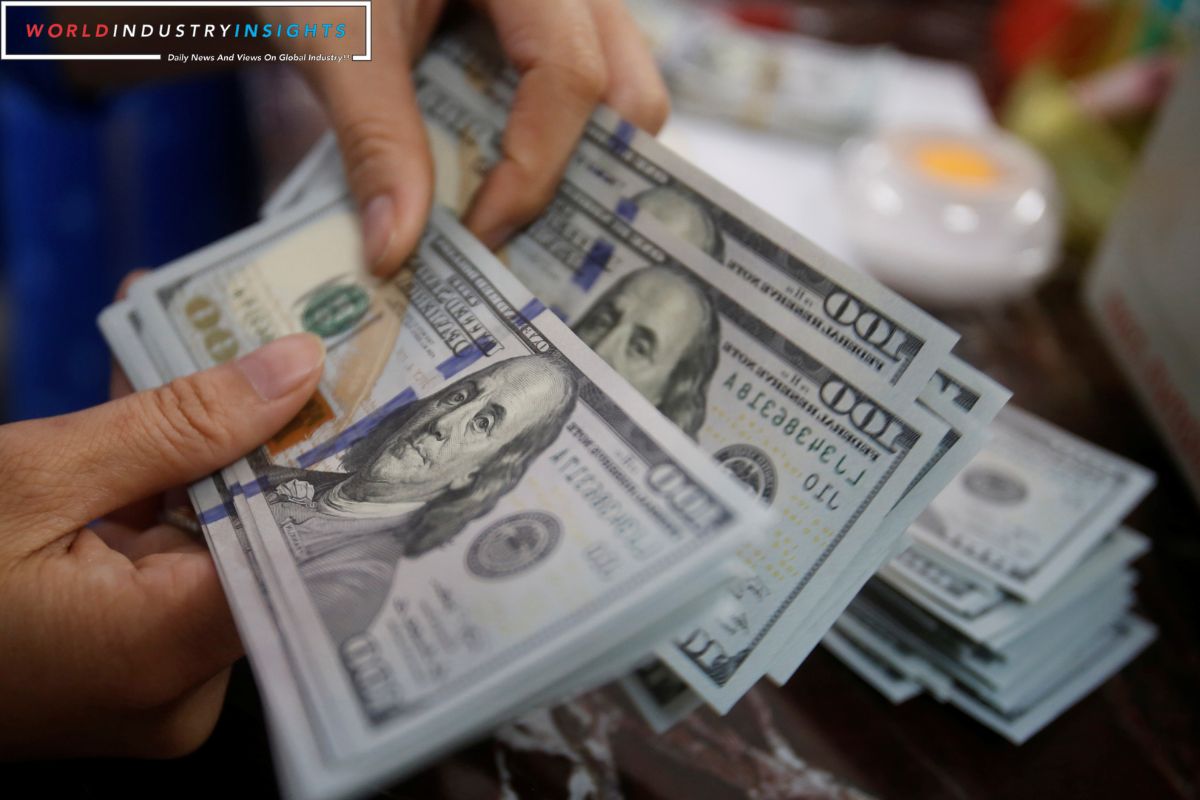Holiday Currency Shuffle: In the midst of the holiday season, the global currency market experienced a noticeable shift as the euro reached its peak amidst thin trading, while the dollar took a slight dip. This unexpected development raises questions about the underlying factors that contributed to such fluctuations.
One possible explanation could be the anticipation of rate cuts by the Federal Reserve, which has been a topic of discussion among analysts and investors alike. Additionally, the performance of the U.S. economy, especially in relation to key economic indicators and retail performance, might have played a role in the currency movements.
As we delve into the post-Christmas trading landscape, it is crucial to closely monitor the Bank of Japan’s policy and the strength of the yen, as these factors often have a significant impact on the overall currency market.
Key Takeaways
- Euro reaches a four-month high against the dollar, indicating euro strength and dollar weakness.
- Market expectations of Federal Reserve rate cuts increase, reflecting anticipation of a slowdown in the US economy.
- US economic indicators show a decline in prices in November, but a rise in annual home prices, indicating a recovering housing market.
- Dollar index falls, indicating6 a decrease from its 20-year high, while the yen remains stable near a recent five-month peak.
Dollar Index and Euro Updates
The recent decline in the dollar index and the euro’s surge to a four-month high have sparked anticipation among investors, who eagerly await signals from the Federal Reserve regarding potential interest rate cuts amidst declining inflation.
The dollar index experienced a decline on Tuesday, with the euro reaching a more than four-month high. This development is significant as it reflects the market’s expectation of a shift in monetary policy.
Also Read: Currency Markets Await Feds Dance: Will Powells Moves Align with Market Expectations?
With trading volumes subdued due to holidays, it is clear that investors are closely monitoring central bank actions and economic data to gauge the direction of currencies.
The weakening of the dollar index suggests that investors are increasingly pricing in the possibility of interest rate cuts by the Federal Reserve. This anticipation has led to a surge in the euro, as investors seek alternative currencies with potentially higher yields.
As we move into the new year, it will be crucial to closely monitor the Federal Reserve’s communications and economic indicators to gain further insights into potential interest rate cuts and their impact on currency markets.
Federal Reserve Rate Cuts Anticipation
Anticipation is growing among analysts and investors as they closely monitor the Federal Reserve’s actions and economic indicators, looking for signals of potential interest rate cuts to address a projected slowdown in the U.S. economy. Here are four key points to consider in the context of Federal Reserve rate cuts anticipation:
- Analysts expect a slowdown in the U.S. economy in 2024, prompting expectations of Fed action.
- The risk of a hard economic landing increases if inflation falls more rapidly than the Fed’s benchmark rate.
- Inflation is expected to continue cooling, providing policymakers with the flexibility to reduce rates by June.
- However, market expectations of a rate cut as early as March may not be necessary unless the economy faces a recession in the coming months.
These factors indicate that while the anticipation of Fed rate cuts is high, the timing and extent of such measures will depend on the evolving economic conditions and inflation dynamics.
Investors and analysts need to closely monitor these factors to make informed decisions.
U.S. Economic Indicators and Retail Performance
As the U.S. economy faces the potential for rate cuts by the Federal Reserve, recent data on U.S. economic indicators and retail performance provide valuable insights into the current state of the economy.
In November, there was a decline in U.S. prices, marking the first drop in over 3-1/2 years. This suggests that inflation is further below 3%, which could be a cause for concern.
On the other hand, October’s data showed a continued rise in annual home prices, indicating a recovering housing market.
Additionally, a Mastercard report revealed a 3.1% increase in U.S. retail sales between November 1 and December 24. This suggests that consumers were actively seeking last-minute Christmas deals and taking advantage of significant promotions.
Currency Movements Post-Christmas Trading
Currency movements in the post-Christmas trading period have shown the euro peaking in thin trading, while the dollar has experienced a dip. The dollar index has fallen by 0.18% to 101.44, indicating a decrease from its 20-year high and an expected annual loss.
On the other hand, the euro has seen a 0.20% increase to $1.1045, reaching its highest level since August. This suggests a positive trend for the single currency, which is projected to gain 3.08% this year.
Additionally, the dollar has gained 0.06% against the yen, positioning it for an 8.68% gain in 2022. These currency movements reflect the ongoing volatility and uncertainty in the global financial markets, influenced by various economic indicators and market conditions.
Bank of Japan Policy and Yen Strength
The strength of the yen and the potential shift in the Bank of Japan’s policy have garnered attention in the currency markets.
The yen has remained stable near a recent five-month peak, fueled by the belief that the Bank of Japan may soon conclude its ultra-easy policy.
This policy, in place since 2022, has kept the Japanese currency under pressure as other major central banks pursued aggressive rate-hike cycles.
BOJ Governor Kazuo Ueda’s recent suggestion that the likelihood of achieving the central bank’s inflation target is gradually rising indicates a potential shift in policy if prospects of sustainably achieving the 2% target increase sufficiently.
This development has piqued the interest of market participants as they closely monitor the future direction of the yen and the Bank of Japan’s policies.
Conclusion Of Holiday Currency Shuffle
In conclusion, the holiday currency shuffle has seen the Euro reaching its peak in thin trading, while the Dollar has experienced a dip. Anticipation of Federal Reserve rate cuts and U.S. economic indicators have influenced these currency movements.
Additionally, the post-Christmas trading period has played a role in the fluctuation of currencies. The Bank of Japan’s policy and the strength of the Yen have also impacted the currency market.
Overall, these factors contribute to an interesting and dynamic foreign exchange landscape during the holiday season.
Our Reader’s Queries
What is the best way to keep foreign currency?
Using credit and debit cards is a smart way to carry foreign currency. Not only does it save space in your purse, but it also eliminates the hassle of converting money. Plus, it’s a secure option that protects you from potential losses due to theft. In the event of theft, you can easily block all transactions and safeguard your funds.
Can you use Splitwise in multiple currencies?
Splitwise ensures that your balances in different currencies are kept separate. For instance, you may owe $12.45 and be owed £8.72. However, with Splitwise Pro, you can easily convert all your transactions with a particular friend or group using the current market exchange rate. This feature is just a tap away, making it incredibly convenient for you to manage your finances.
How do you organize currency?
Currency sleeves are a fantastic way to keep your collection organized. These clear plastic sleeves allow for easy viewing and access to your notes, making it effortless to monitor your collection and spot any potential problems. With this tool, you can keep your notes in order and ensure that your collection remains in top condition.
How does a multi currency card work?
With the Multicurrency card, you have the freedom to withdraw cash or make purchases at any Point of Sale (POS) terminal worldwide, in any currency. Plus, if the transaction is in a currency available on the card, you’ll be safeguarded against foreign exchange rate fluctuations. Enjoy the convenience and security of using a single card for all your global transactions.




